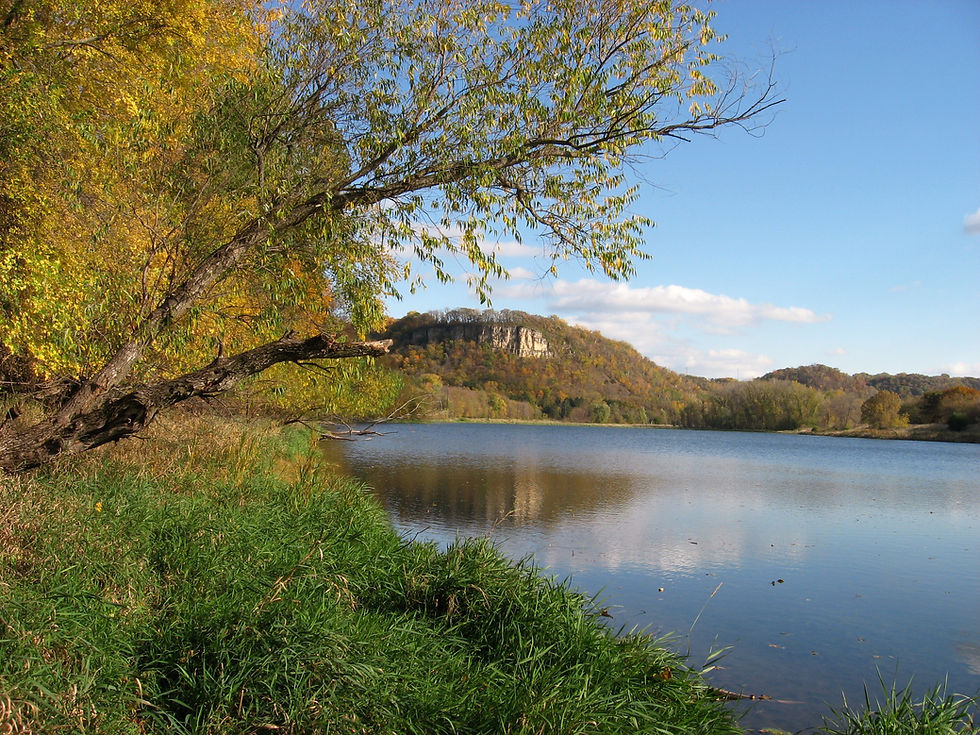Late Summer Bird Activity
- Bruce Ause
- Aug 27, 2017
- 2 min read

Ruby- Throated Hummingbird
For most of the summer, we have had very few hummingbirds at our nectar feeders. That all changed about two weeks ago. With visits of a dozen hummingbirds attacking the feeders at one time. No doubt the increase in activity is due in part to the new crop of youngsters. This activity seems to be most intense early in the morning and later in the day.

Racing Pigeon
On August 1st, Wacouta resident Pat Friedrich noticed an uninvited visitor at her bird feeding station - a racing pigeon. She made that determination by observing a colored band on each leg. Thinking the bird would leave in a couple days, Pat was not too concerned. After having the bird thriving on the local accommodations for the past three weeks, The thought entered her mind what would this bird do when the snow starts flying?
Eventually, I went down with my camera and telephoto lens and took photos of the leg bands. The information provided on the band led us to the rightful owner in Rochester.

Arrowhead
One of the casualties of the serious sedimentation problem at the head of Lake Pepin is the disappearance of the Arrowhead plant sometimes known as "Wapato." This large arrow shaped emergent aquatic plant is a valuable source of food for wildlife like muskrats, beaver and swans. The potato like tubers were harvested by my ELC participants 40 years ago and served at our Wild Edible Foods Banquet. Three years ago, I dug up a few tubers for a meal and planted four extra in our backyard pond. Right now they might be the only Wapato one could find in Wacouta anymore.

Giant Hyssop
A new prairie wildflower appearing along the Rattlesnake Bluff trail since my last posting is the lavender colored Giant Hyssop. A distinguishing characteristic of this colorful plant is the anise smell of crushed leaves.

Wild Cucumber
As you drive along highway 61 in Wacouta, you might notice very dense, large patches of white flowered vines climbing up on some spruce trees. These wild cucumbers are sometimes called "Old Man In The Ground." This anthropomorphic name is derived from the swollen lobes of unearthed tubers. On an old plant, a tuber might be several meters long and weigh over 200 pounds.

Queen Anne's Lace
You might have noticed the past two or three weeks that the yellow flowers of wild parsnip in our roadsides have been replaced by white flowers of wild carrot sometimes referred to as "Queen Anne's Lace." It has only been the last couple years that we have observed the invasion of this alien plant.

Queen Anne's Lace
If one looks closely at the flower of this plant, you will notice a dark purple floret near the center. Legend has it that when Queen Anne was making this lace, she pricked her finger with a needle and this is a drop of blood. In reality, this dark floret attracts ants which assist in pollination.

Morning Fog
As summer marches along and we head closer and closer to the autumnal equinox, a common morning occurrence is dense heavy fog. As cold morning air meets the warm water of the river some spectacular scenes develop with 300 foot limestone bluffs as a backdrop.




Comments